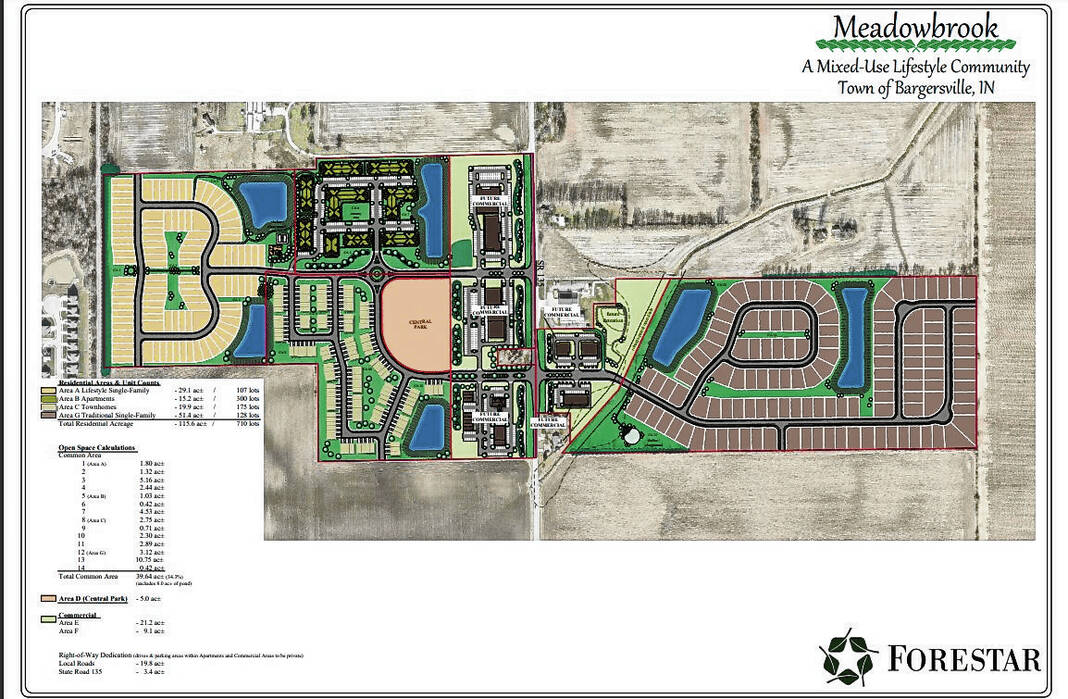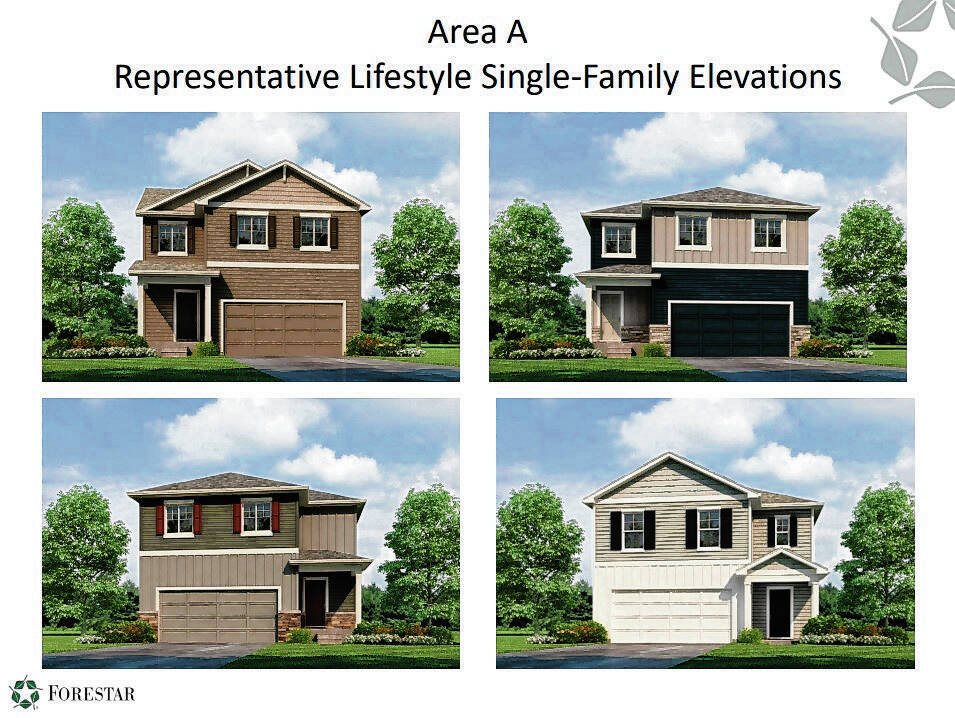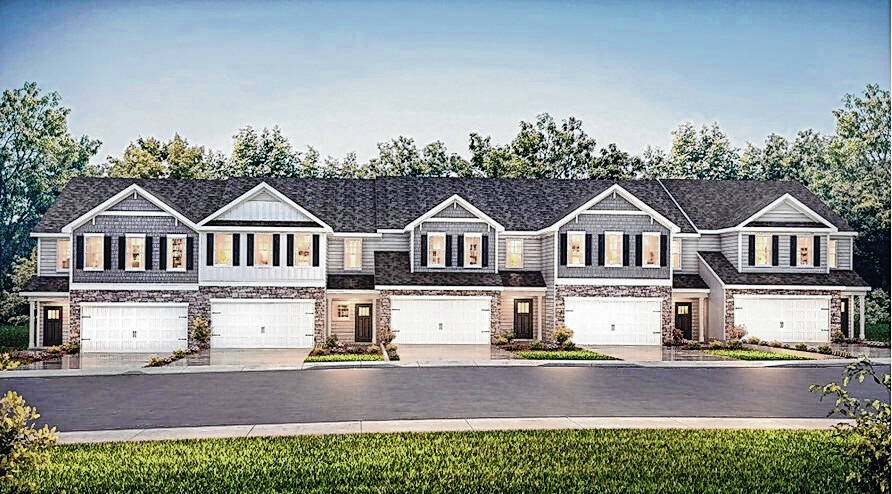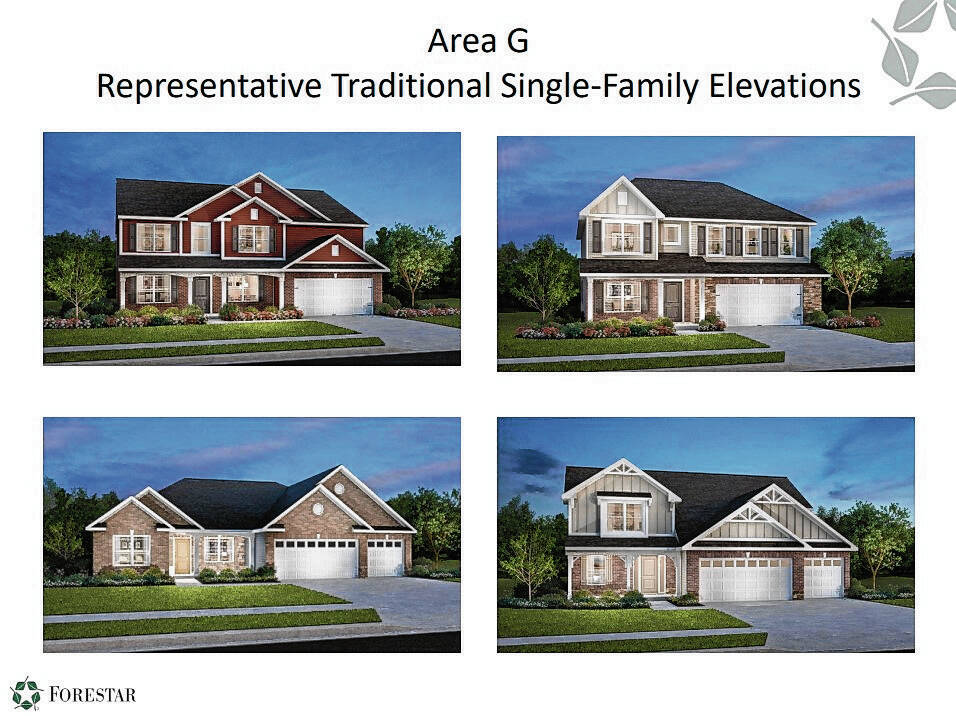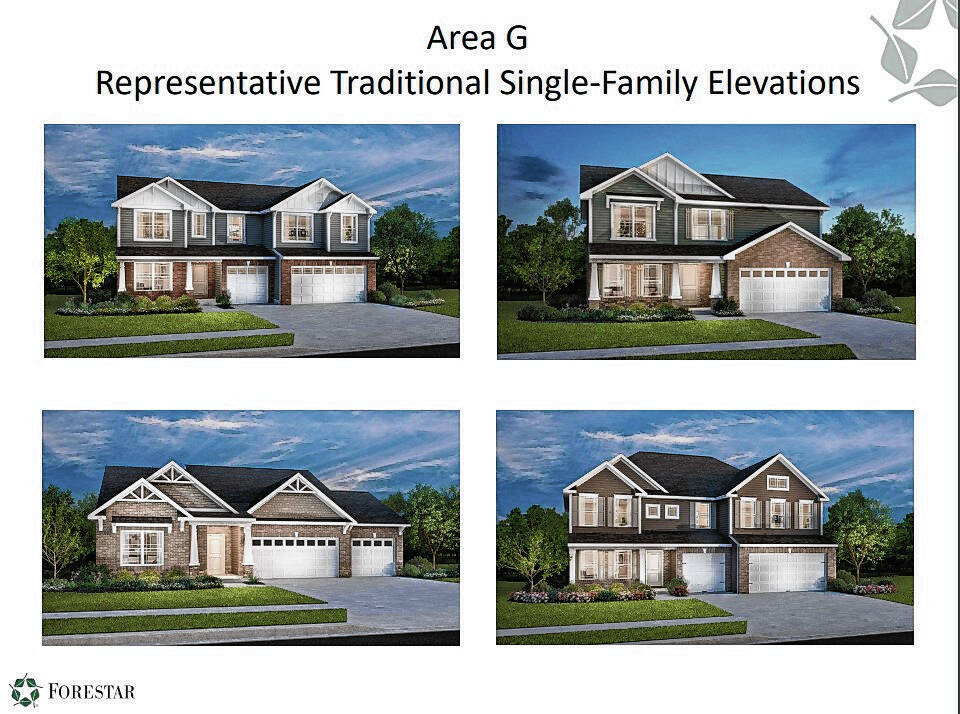A mixed-use development will once again be revised after concerns were raised about the project.
The proposed Meadowbrook development would rezone 129 acres at 3895 N. State Road 135 from agricultural to planned unit development, or PUD.
The project would bring 386 units of townhomes, smaller and larger single-family homes, a five-acre public park and nine acres of commercial space, if approved by the town council. The public park would be donated to the town, and would become the second largest park in Bargersville inventory, said Eric Prime, an attorney representing Forestar Real Estate Group, Inc. Plans also include space for a common area, a shelter and a playground.
The development was first presented to the plan commission at their June 2023 meeting. At the time, commissioners raised concerns about traffic, a potential traffic light, road impact fees and other issues. Residents raised concerns of traffic, noise and light pollution at a public meeting in November.
The commission voted to send the development to the town council with an unfavorable recommendation 6-0 at the Nov. 20 meeting. Commissioners raised concerns about the project not having a selected builder and connectivity to the north and south.
The original site plans presented to the plan commission had a total of 710 units including apartments, townhomes and single-family homes. It would have also designated right of way for a future collector road on the west side of the development along the railroad tracks.
The plans have been trimmed down during the planning process and now town councilor members are concerned too much has changed, they said Tuesday.
“I think we’re getting there with this project,” said Susie Qualls, a council member. “However, I think it’s such a significant change from what you initially presented at the plan commission. I personally feel it needs to go back to the planning commission.”
The new plans would remove the apartments, upgrade some of the single-family homes and add additional architectural features to the townhomes. For some of the single-family homes, the developer enlarged lot sizes from 40 feet to 50 feet by adding a third garage space.
Additionally, the plan would relocate the single-family homes and townhomes in place of the proposed apartments. New architectural features to the townhomes would include staggered roof lines, an additional window next to the front door and variations in exterior materials.
Right of way for the road would be moved between housing sections and the commercial zone, but that could change, Prime said.
A traffic study completed for the project warranted a stoplight once the development was constructed, Prime said. Commissioners and petitioners have discussed how to fund the installation of a stoplight, who would be responsible for the fees, fee collections and more over several months. Ultimately, petitioners decided to grant the town $250,000 to cover the cost, Prime said.
Council members were particularly concerned about how much the project changed following the removal of the apartments compared to what was originally proposed, as well as the lack of commitments by the developer. Council members also did not like that the developer did not have a builder for the housing.
“You’ve alluded to this being advantageous for future residents, but we’ve also heard a lot of commentary from existing residents,” said Jaime Pheifer, town council member. “At some point in time, you have to take them into account. My perspective is the project is certainly getting there. I think there are some significant changes.”
Some council members wondered if the changes should be sent back to the plan commission. Town Attorney David Yount said the changes are more restrictive and it would not necessarily warrant them sending back to the commission. The petitioner would have to withdraw and the commission would have to make an exception to allow the project to go back before them within a year, he said.
The planning commission is an advisory board and the plans would ultimately land back on the town council’s agenda for a decision, Prime said. He’s not sure there would be enough of a change to go back through the process and start from “scratch again,” he said.
With the plan’s expiration approaching on Feb. 18, town council members and the petitioners decided to continue the final vote on the development to the Feb. 13 town council meeting.



